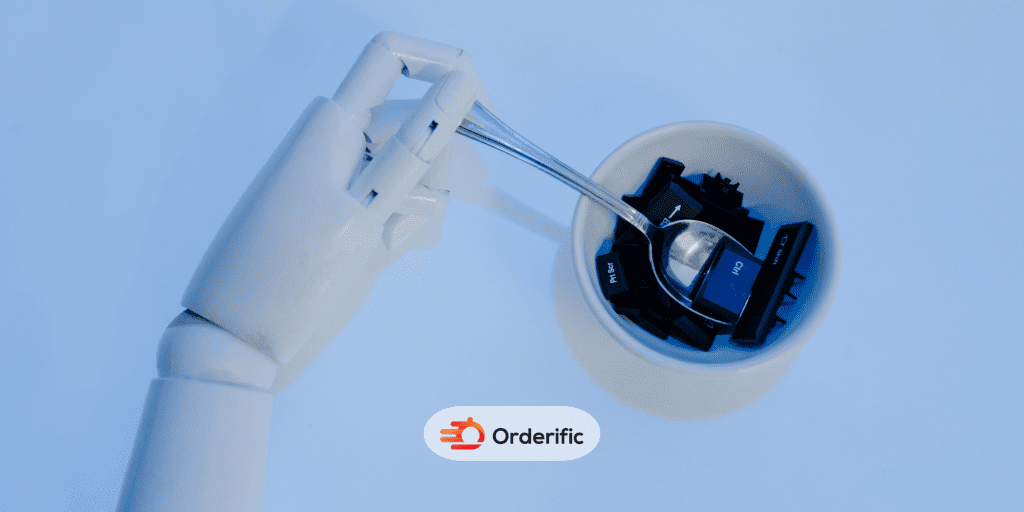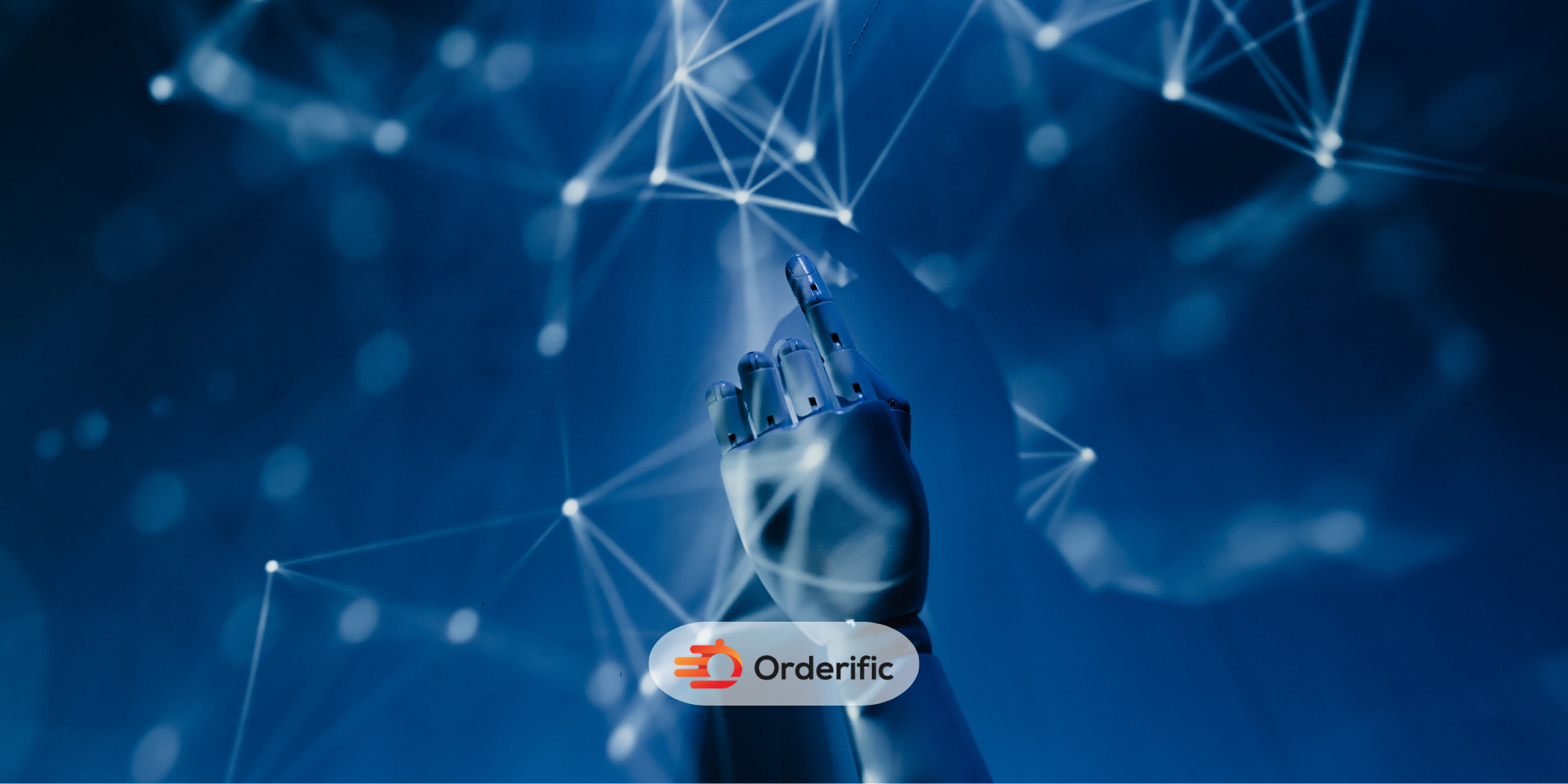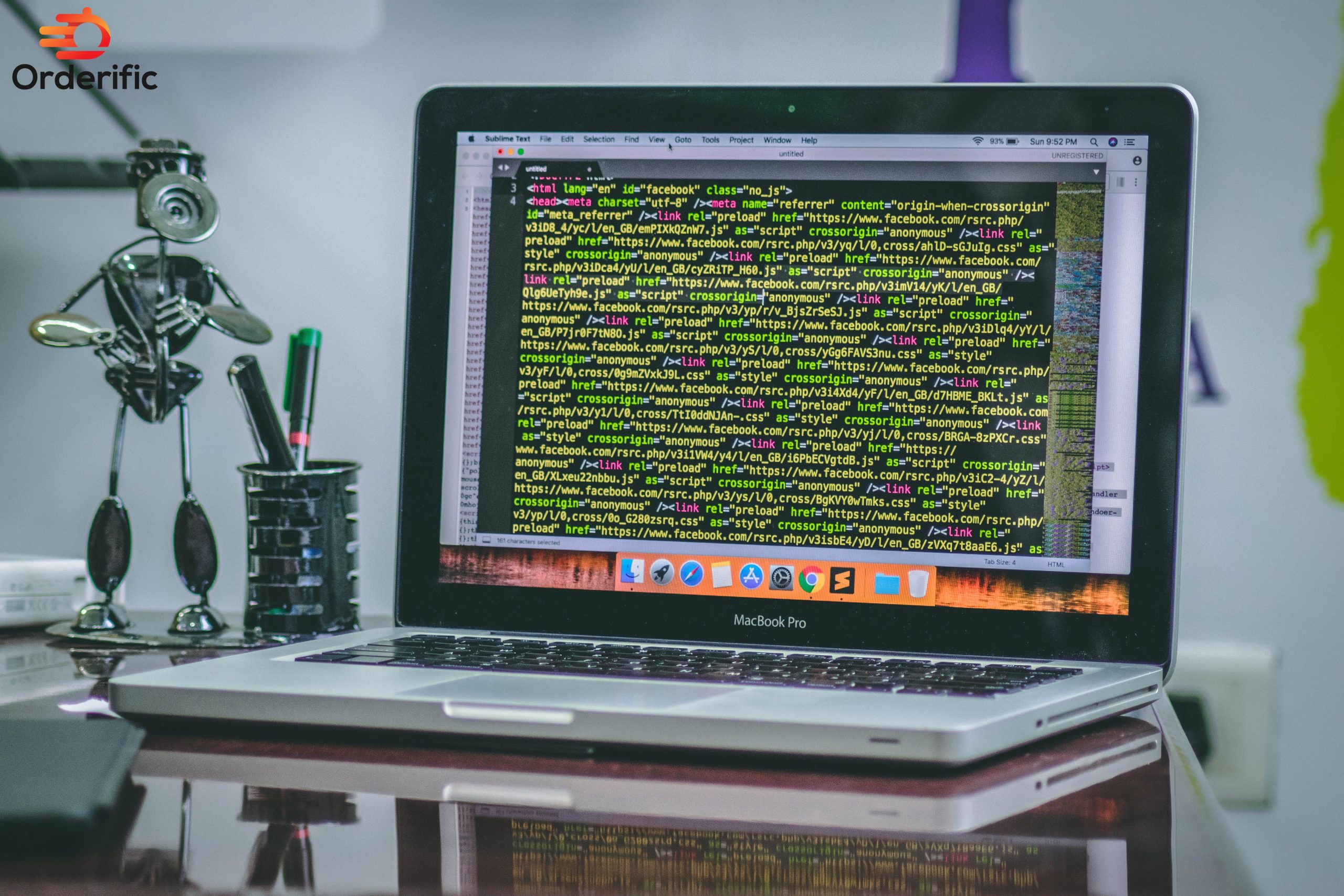Welcome to the future of dining! Imagine walking into a restaurant where your food preferences are known before you even glance at the menu. Your meal is flawlessly prepared and served at the perfect temperature, all orchestrated by artificial intelligence (AI). Sounds like science fiction? Well, not anymore. AI in restaurant operations is not a distant dream but the reality of today’s dining landscape.
The restaurant industry is embracing the power of AI and machine learning, and it’s more than just about building a smart kitchen. It’s about revolutionizing the entire dining experience, from order-taking, and meal preparation, to customer service. These technologies are reshaping restaurant operations, making them more efficient, personalized, and interactive. So pull up a chair and let’s delve into how AI is serving up the future of dining.
What is AI for Restaurants?
Artificial intelligence, or AI, refers to the ability of machines and computers to perform tasks that typically require human intelligence. In simpler terms, it’s about teaching machines to think and act like humans. When applied in restaurant operations, AI enables computers to analyze vast amounts of data and make decisions on behalf of humans.
These intelligent systems are designed to learn from patterns, recognize errors, and continuously improve their decision-making abilities. This means that over time, AI-powered systems can perform tasks with greater accuracy and efficiency than humans.
How to Leverage AI For Restaurants?
AI and machine learning can be applied in various ways to enhance restaurant operations. Here are some of the most common use cases:
- Personalized Ordering: AI-powered systems can analyze customer data, such as past orders and preferences, to recommend personalized menu items. This not only improves the dining experience for customers but also increases sales for restaurants.
- Inventory Management: By analyzing sales data and predicting future demand, AI can help restaurants optimize their inventory levels. This reduces waste and ensures that restaurants always have the right ingredients on hand.
- Predictive Maintenance: AI can also be used to monitor equipment and detect potential malfunctions before they happen. This helps prevent costly breakdowns and ensures smooth operations in the kitchen.
- Customer Service: Chatbots powered by AI can handle customer inquiries and feedback in real time, freeing up staff to focus on other tasks. These bots can also be programmed to make personalized recommendations based on a customer’s preferences.

How AI Can Improve Guest Experience?
AI and machine learning are transforming the guest experience in restaurants. With advanced technologies, restaurants can now offer a more personalized and interactive dining experience. Here’s how AI is making this possible:
- Efficient Order Taking: AI-powered systems can process orders faster and with greater accuracy than humans. This means that customers can expect their food to arrive quickly, reducing wait times in the restaurant.
- Seamless Payments: With AI, payments can be made through facial recognition or voice commands. This eliminates the need for physical cards or cash, making the payment process more convenient for customers.
- Smart Recommendations: By analyzing customer data and preferences, AI-powered systems can make personalized menu recommendations. This not only enhances the dining experience but also encourages customers to try new dishes, increasing sales for the restaurant.
- Improved Customer Service: Chatbots and digital assistants powered by AI can handle customer inquiries and complaints in real time. This ensures that problems are resolved quickly, leading to happier customers and better reviews for the restaurant.
How Restaurants Are Implementing AI?
AI and machine learning are being adopted by restaurants around the world, from small eateries to large chains. Here are a few examples of how AI is being implemented in real-life scenarios:
- Improve Stock Management: Restaurant chains like McDonald’s are using AI to analyze sales data and predict future demand. This helps them optimize their inventory levels, reducing waste and ensuring that customers always have their favorite items available.
- Automating Restaurant Bookings and Responses: London-based restaurant chain PizzaExpress is using AI to automatically respond to customer inquiries and make reservations. This frees up staff from administrative tasks, allowing them to focus on providing excellent service during busy times.
- Personalizing Customer Experience: American fast-food giant, Taco Bell, is using AI to personalize the customer experience by recommending menu items based on a customer’s past orders and preferences. This not only enhances the dining experience but also increases sales for the restaurant.
- Facial Recognition: KFC China is using facial recognition technology to make payments for customers. This eliminates the need for physical cards or cash, making the payment process more convenient and secure.
- Predictive Maintenance: Restaurant chain TGI Fridays is using AI to monitor equipment and predict potential malfunctions. This helps prevent costly breakdowns and ensures that operations run smoothly in the kitchen.

The Future of AI and Machine Learning for Restaurants
While we’ve already seen the substantial impact of AI and machine learning in modern restaurant operations, the future holds even more exciting possibilities. We anticipate a world where the dining experience is enhanced by hyper-personalized services, thanks to the continual evolution of AI technologies. For instance, we could see AI creating unique recipes tailored to individual dietary needs and taste preferences. We could also see AI systems predicting future food trends based on consumer data and preemptively adjusting menu offerings to match these trends, ensuring that restaurants are always ahead of the curve.
Besides personalization, AI and machine learning will play a crucial role in refining operational efficiency. Future advancements in predictive analytics will allow restaurants to accurately forecast demand down to the minutest details, such as the number of diners on a specific day, hour, or even minute, and the exact quantity and type of ingredients needed. This level of precision will enable restaurants to minimize waste, optimize the supply chain, and significantly enhance profit margins. Furthermore, AI could revolutionize restaurant design, actively suggesting changes in layout or decor based on datasets like customer feedback and behavior patterns to create the most appealing and efficient spaces. The future of AI in restaurants is truly a blend of enhanced customer experience and operational excellence.
Conclusion
With AI and machine learning, the future of restaurant operations is bright and full of possibilities. From personalized ordering to predictive maintenance, these technologies are reshaping the dining experience for customers and streamlining operations for restaurants. We can’t wait to see how these advancements continue to evolve and enhance our dining experiences in the years to come.
Are you ready to embrace the power of AI in your restaurant? The future is now! So, the next time you visit a restaurant, don’t be surprised if AI is behind the scenes making your dining experience smoother and more enjoyable than ever before. Enjoy your meal with advanced technology at its best!
Click here for more insightful and trendy content with Orderific. To start experiencing the great benefits Orderific can bring to your business, click here now. Try Orderific!
FAQs
How can AI lighten the load of existing staff in restaurants?
AI can automate routine tasks, freeing up staff to focus on more critical and engaging tasks. This not only reduces the workload but also increases productivity and efficiency.
Why do restaurant owners love the AI-powered tool?
Restaurant owners love AI-powered tools because they can help them streamline operations, increase efficiency, and ultimately boost profits.
How would you use AI for your new restaurant business?
As a new restaurant business owner, I would use AI technology to enhance the overall dining experience for my customers.
What are some AI tools that help with customer support?
Some AI tools that help with customer support include chatbots, virtual assistants, and voice recognition software.
How does AI contribute to sustainable practices in restaurants?
AI contributes to sustainable practices by enabling efficient resource management. It can optimize inventory levels by predicting demand, thereby reducing food waste.













